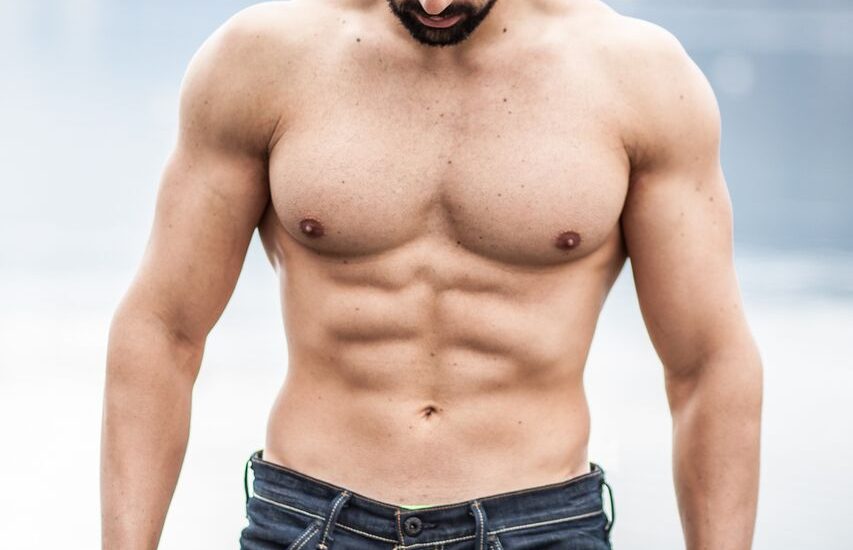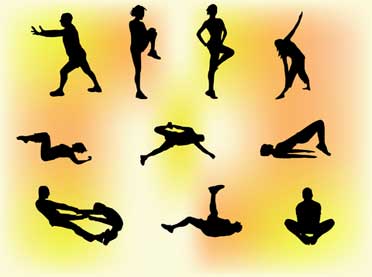Myths about bone morphotypes and size. Muscle length. Bone morphology. Do the little ones have an advantage?
When I started bodybuilding, I never knew the importance of genetics.
I did not know about the existence of morphotypes, let alone morpho-anatomy, about the differences that existed between different people and which could then change everything.
This is why today we are publishing this article to take stock of genetics in bodybuilding once and for all and, above all, to avoid mistakes and waste time explaining ourselves clearly. that define your strength potential.
Resume
- Myth # 1 about genetics in bodybuilding: morphotypes
- Bodybuilding Genetics Myth 2: Bone Size Is Everything!
- Bodybuilding Genetics Myth # 3: The smaller you are, the easier!
- Real Genetic Potential # 1: Your Muscle Length
- Real Genetic Potential # 2: The Length of Your Bones
- Genetics of strengths and weaknesses
- Basal Metabolism Genetics
- Genetics of Strength
- Willpower vs. Genetics
- Conclusion
Myth # 1 about genetics in bodybuilding: morphotypes
In the 1940s, a psychologist named William Sheldon tried to classify people into three main morphotypes that we now find ubiquitous in the bodybuilding literature, and which are necessary to define our capabilities and difficulties.
The first of these morphotypes is ectomorph, that is, a slender person who would have a “fast” metabolism, struggling to build muscle, but on the contrary has the ability to lose fat. They say he’s nervous.
The second of these bodybuilding morphotypes is endomorph. This is the complete opposite of an ectomorph, namely that it is squat, with a large bone structure, a “slow” metabolism, and the ability to gain weight both in muscle and in terms of fat gain. His temper is said to be rather slow.
Finally, the third of these morphotypes is mesomorphic, that is, the ideal person for bodybuilding with perfect morpho-anatomy, that is, the bone leverage optimized muscle length, which therefore facilitates both muscle loss and fat loss. Obviously gifted person par excellence.
Unfortunately, these classifications are just extremes, and not something that actually exists in nature.
We are all a mixture of these three morphotypes according to our sports history, food, education, life …
To say that you are an ectomorph, trying to justify your difficulties by gaining muscle and gaining weight, does not hold water. No drug-free bodybuilding practitioner, without exception, gains muscle mass easily. This is what makes this practice all the beauty. You must deserve your progress.
Then the reality is that nothing really is connected. We may have opportunities, in particular, for muscle building, but also difficulties for others. We may have a nervous temperament and gain fat “easily” because we had a history of fat, which means we were much fatter at one time.
I think I am a good example of the non-existence of these morphotypes, as shown in my video about evolution: from ectomorph to mesomorph? No! Just the result of many years of work.
Forget these stories about bodybuilding morphotypes, they won’t help you progress better. Worse, they’ll slow you down.
Bodybuilding Genetics Myth # 2: Bone Size Is Everything
It has also long been believed that bone size is a determining factor in determining one’s potential.
We’ve seen different wrist and ankle based formulas emerge over the years, as in the calculations section of the website: What are your ideal body sizes?
But this again has nothing to do with your potential. You may very well be gifted for the quadriceps rather than the hamstrings, gifted for the biceps and not the triceps.
Bone size does not determine your muscle potential or your strength potential.
Large bone only means large bone and therefore measuring the same amount of muscle.
For example, I have about 18.5 cm around my wrist and 21.5 cm around my ankle. According to “scientific” calculations, I could not take the measurements that I am currently doing.
Based on generality alone, it is impossible to determine your real potential. You should think more analytically.
Myth # 3 about genetics in bodybuilding: the smaller you are, the easier!
As you can see from our article. Is bodybuilding easy for you? it is not size in general terms that determines the ease with which we will develop.
It’s a matter of proportion. One can very well have tall stature and proportionate short arms, which I classify according to the Superphysical Method in the Dinosaur category, just as we can be small with long segments, which I then classify in the Dinosaur category. spiders “.
However, the length of the segments comes into play because it takes less muscle to grab 1cm of the arm if you are 1m70 than for 1m90. This is because the length of the arm is not the same: it takes more volume to get the same increase in circumference (remember your mathematical formulas for calculating cylinder volume!).
In addition, when you take 1 cm of your hand, when you are “small”, you can immediately see much more than when you are “tall”. If you are 1m70 and you have 42cm arm circumference, it is safe to say that this makes your arms quite huge in the eyes of everyone, while if you are 1m90 with the same size, it is unlikely to appear muscular (I am speaking deliberately, since I was there!).
Being tall, that is, having long segments, is also a disadvantage for building muscle and strength. If you have read our Super programs, you know that having long arms and long hips is a serious problem: the amplitude of the exercise increases, the muscles and joints stretch, which reduces the risk of injuries such as muscle tears if you do not adapt your choice. exercise and exercise range to yourself.
We also show less effort because the “big” leverage is unfavorable, which means that in practice we put less weight to lift the same weight when in reality we develop more.
We rarely see a strong “tall” (long); you just have to go to an Athletic competition to figure it out.
That’s why again, you have to adapt each exercise to your morpho-anatomy, to your leverage, and not do the same as your neighbor, especially if you are completely against!
Pay attention to the important amplitude of the bench press when you are tall (1m95):
But genetics in bodybuilding cannot be summed up.
Real Genetic Potential # 1: Your Muscle Length
The length of the muscles in each of your muscles is the number 1 factor in bodybuilding genetics that determines your potential.
Instead of the first potential from a general point of view, which does not exist, we can determine by the length of each muscle whether they have more or less significant potential and especially adapt it.
We do not train the short muscle like the long muscle, otherwise we risk causing disaster in terms of muscle development and / or injury.
By observing and analyzing morpho-anatomical people to personalize my workouts with follow-up exercises that I do with my students, I quickly see which person is gifted or not for muscles.
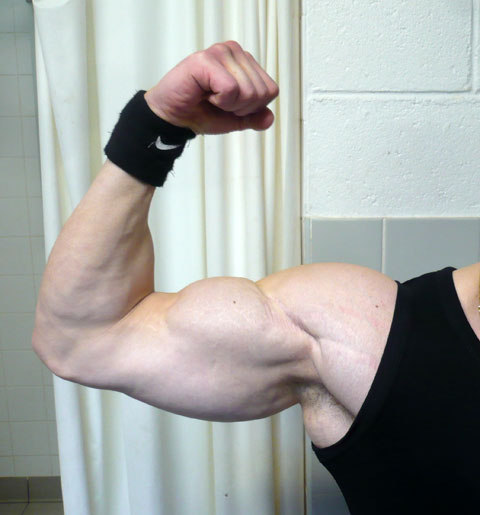
Dushan has short biceps!

Thibaut has long biceps!
We must also take into account that we all tend to have long and short muscles.
There are admittedly exceptions like Michael Gundill of Team Legend SuperPhysique, who has virtually all the long muscles except the long instep support, the posterior ray of the deltoid muscle and the infraspinatus.
But personally, I have never seen people without short muscles, without exception. Each person is necessarily more gifted for muscles (for morpho-anatomical analysis)
However, the “short” muscle can give an interesting visual rendering. This is the case when the biceps, when short, emphasize the famous biceps peak
This can also be found at the quadriceps level, particularly in the example of Fabrice from the SuperPhysique Bronze team, who has a rather short outer quadriceps outside of the knee, just like Cyril from the team. Superphysical Gold:

Fabrice has a large outer, rather short!

Kirill also has a rather short outer space!
This gives a rounded appearance to the quadriceps, while developing the opposite of the large, long outboard, which will give more “square” quadriceps in time.
Finally, note that, unfortunately, there are inevitably differences in muscle length between the right and left sides, and that you cannot change anything. This is again quite evident in Fabrice’s photograph, with the large outer part of his right thigh (left in the photo) being longer than the vast outer part of his left thigh (right in the photo).
So you have to live with it because muscle length doesn’t change, as some experts say.
Real genetic potential n ° 2: the length of your bones
Like the length of your muscles, the structure of your bone and, in particular, the length of your segments will determine the shape of your physique, the ability to develop certain muscles (which can compensate for a short muscle, which will be difficult to develop without this basis, favorable for its development) and excel at certain exercises.
Take an example of your ribcage and your shoulder width (collarbone length). In general, you have one of the two, but not both (it exists, but it is rare).
If you have a large ribcage, you will benefit both visually by giving the impression of good development of the pectoral muscles (without specifically having one) than with chest exercises. This way you will push more on all bench press exercises, such as the bench press. This usually goes hand-in-hand with longer and wider ovens, so the benefits add up to make your sad legs strong.
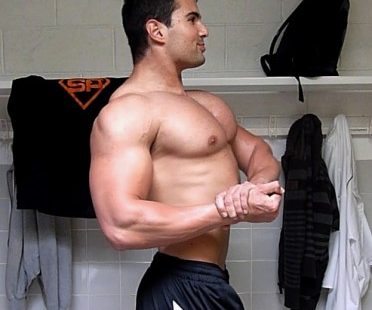
Rudy has a large chest, but short collarbones
And vice versa, if you have broad shoulders and a rather flat chest, it is morphologically unprofitable for you to have pectoral muscles and, besides, even if you get it, visually it will not come out as much as if you had a large pectoral cage, while at the same time predisposing to shoulder injuries and chest pain due to the increased amplitude you will assume in the low position of your bench press exercises. You will need to adapt the exercise selection to suit your morpho-anatomy (to see a list of the best exercises according to your morpho-anatomy).
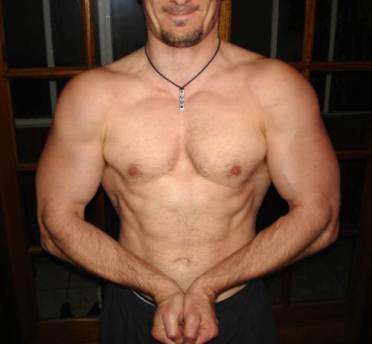
Fabrice has large collarbones
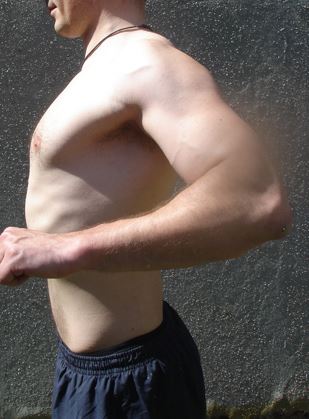
but very narrow chest
To continue with this shoulder and chest width, we can also add that the large size with the collarbones obviously gives a wide aspect to the front without the need for deltoid proportion. Therefore, everything needs to be analyzed, not considered as a whole.
This is just one example out of many, so that you understand that having the right genetics in bodybuilding is not easy to define (to find yours, watch these anatomical morpho analysis videos).
Genetics of strengths and weaknesses
Among all our muscles, we can make an interesting distinction when it comes to catching a weak spot.
A strength is a muscle that develops through basic and / or multi-joint exercises without the need for specific techniques to help it develop (example of a specific technique: using very consistent exercises). very long to develop your vasculature (concept of cardiomuscular density).
Thus, the weak point is a muscle that does not develop despite the main work, and therefore requires more detailed work, exercises that should be chosen with caution.
Unfortunately, there are weak points that are very difficult to track down or not at all. This is where the distinction comes in, which will save you a lot of time and avoid having to worry about something that almost never comes.
There are two types of muscles:
Musculo-articular muscles
That is, they act on only one joint. These muscles cannot benefit from modular stretching compared to other muscles that surround them and are very difficult to catch up if they are weak points. Note that in general, the weak point is the short muscle with additional difficulty (this is the worst possible combination).
The main single-joint muscles in bodybuilding: short portions of the biceps, large internal and external triceps, pectorals, dorsal, trapezius, large internal and external quadriceps, gluteal muscles, deltoids (completely), soles of the calves.
Two-joint muscles
They work on two joints, and you can “easily” choose strategic exercises that ideally use a length-to-stretch ratio that allows you to more accurately apply those muscles to the detriment of others. Therefore, understanding this relationship is extremely important when performing your resistance training program.
The main two-joint muscles in bodybuilding: long biceps, long triceps, anterior quadriceps, double calf muscles, hamstrings (except for short bio-joints, which are single-joint).
To help you, here is a list of major muscles (non-exhaustive) categorized into these two categories:
Basal Metabolic Genetics
Genetics in bodybuilding can also take on a “dietary” aspect, that is, whether you burn a lot of calories or not for the same effort.
Obviously, this is your ability to grow or dry out quickly. For example, some people might eat 4,000 calories a day when they weigh 75 kg and not gain weight if someone of the same size gets noticeably fat.
The “speed” of your metabolism initially has its own genetics, but also depends on your past. So if you’ve been fatter before, chances are your metabolism is going slower than your partner, who has always been fat-free.
The fact that before you had fat, probably due to the formation of fat cells (unfortunately, almost immortal), slows down the metabolism and “helps” to release fat at the slightest difference (I ask you to fill these cells not only). This is called a “fat story”.
It can also lead to a reduction in the carbohydrate diet at the expense of fat from an energy standpoint, as we talked about in this SuperPhysics podcast on the ketogenic diet in bodybuilding:
Other factors affect your metabolism:
- Age: the older you get, the slower it gets. You will have to eat less.
- Amount of muscle: the more muscle you have (we are talking in kilograms), the more calories you burn for the same effort, just to breathe or walk.
- Your current diet: If you follow the site’s advice by eating small meals between meals to spread your calorie intake throughout the day, your metabolism will function faster as well
Finally, note that we don’t all store fat in one place. This is mainly due to heredity and there is nothing to do. Some more readily accumulate in the stomach, while others are more on the buttocks and lower body, which are differentiated by the names “androids” versus “gynoids”.
Genetics of Strength
In addition to morpho-anatomical factors (bone and muscle), there are other genetic parameters that determine whether you will be stronger or weaker after many years of training.
If we take the examples at Team SuperPower, Jill Pinheiro, after 6 months of strength training, there was already 180 kg squat and 217.5 kg deadlift!

This was evident due to beneficial leverage (short thighs), muscle points such as gluteus maximus, quadriceps and back, and neural factors (in addition to extraordinary intelligence).
We are all more or less explosive and strong at the base. You only need to remember our college tests to realize that some ran faster than others in the sprint, while others were better at medium or long distance.
Thus, the effective nervous system for strength is very genetic and depends mainly on two subfactors:
Speed of propagation of a nerve impulse
The faster a nerve impulse arrives, the more explosive, faster and stronger it is. This is usually due to the types of muscle fibers you have, the “fast” fibers contract much faster than the “slow” fibers. Please note that this factor is a minor improvement, in the scientific literature this factor is improved by 10% if trained.
Number of collected fibers
In an article on bodybuilding: Should you go to failure and force every streak? We talked about the inhibitions imposed by the nervous system to prevent injury. So even if years of training tend to increase the number of fibers recruited and limit their inhibition, the fact remains that some will always gain more muscle fibers (at the same time) than others, and whoever says more fibers is used says more strength!
Are you injury resistant?
As in the movie Indestructible, there are very fragile people who hurt themselves very easily, and others who seem to be made of adamantium in relation to Wolverine.
In general, several factors are decisive for judging its fragility at first glance:
The length of your muscles
The longer the muscle, the less likely it is to rupture. The seams are also protected by this length. Conversely, the short muscle is more fragile because it is very easy to go too far when stretching and stretch the tendons of that muscle.
For example, if I have short biceps and bend over with my arms down, I will stretch the tendons too much and increase the chances of injury.
This is why the short muscle requires a reduction in the amplitude of your exercises in order to protect your joints.
Your bone structure
Athletic strength competitions are a great thing to understand that the size of your bones, your structure, is a very important factor in your strength. So if you have fine bones like thin knees, thin hips, thin waist … it’s safe to say that if you risk squatting harder and harder, you will find yourself in pieces.
Whereas if you had larger bones, hips and a large waist, there would be less “chance” of injury in the long run. Your structure determines, as we have seen, the exercises for which you are especially made, the ones for which you are not designed, and which should be avoided.
Remember that no exercise is necessary (to see a list of the best exercises according to your morpho-anatomy).
Your height
Being tall, that is, “long” in bodybuilding, has only drawbacks or almost. Through the levers (the length of the arms and hips), the pressure exerted on the joints is increased. Even if good technique protects in theory, in practice it will not be enough in the long run to counteract premature wear and tear on your joints, as opposed to “small” which will be subject to much less pressure.
Willpower vs. Genetics
Finally, the last item on this non-exhaustive list, the mental factor is also very important. Aren’t we saying that when we really want something, we do everything to get it?
For many years on forums my motto sounded like this: “Do you want muscles or don’t you want?” This meant that if you really wanted to, you would put in the effort necessary to achieve your goals.
The good side is that this motivational factor is not only genetic (there is a part). It only depends on you, and in order to convince yourself, you just need to look at what allows you to fulfill your will by looking at the photos.
Conclusion on bodybuilding genetics
It is clear that genetic differences exist and that we cannot combat them.
The biggest mistake in the bodybuilding world is comparing yourself to others. You may have a role model, you want to look like someone else, but remember that the real goal that everyone should set for themselves is to become better.
Morpho-anatomical analysis allows you to show that you are truly unique and that your long-term progress is about personalizing what you do at all levels.
So, whatever your genetics, you still have the opportunity to develop.
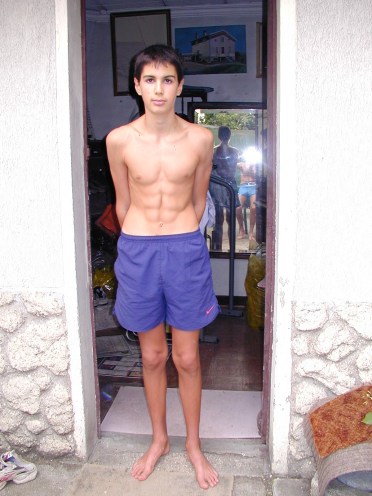
Rudy at 14!

Rudy today!
If I did, why didn’t you? Hope I have enlightened you about genetics in bodybuilding.


